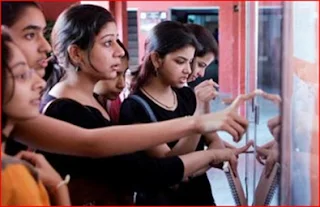
Free Education For All Children.
1.INTRODUCTION
Compulsory and free education to all children up to the age of fourteen years is the Constitutional commitment in India. At the time of adoption of the Constitution in 1950, the aim was to achieve the goal of Universalisation of Elementary Education (UEE) within the next ten years i.e. by 1960. Keeping in view the educational facilities available in the country at that time, the goal was far too ambitious to achieve within a short span of ten years. Hence, the target date was shifted a number of times. Till 1960, all efforts were focused on provision of schooling facilities. It was only after the near realization of the goal of access that other components of UEE, such as universal enrollment and retention, started receiving attention of planners and policy makers. It is the Quality of Education, which is at present in the focus in all programmes relating to elementary education in general and primary education in particular.
Significant efforts have been made in the last fifty years to universalize elementary education. Since 1950, impressive progress has been made in every sphere of elementary education. In 1950-51, there were about 210 thousand primary and 14 thousand upper primary schools. Their numbers are now increased to 627 thousand and 190 thousand respectively as in the year 1998-99; thus showing an average annual growth of 2.30 and 5.58 per cent per annum. As many as 83 per cent of the total 1,061 thousand habitations have access to primary schooling facilities within 1 km and 76 per cent habitations to upper primary schooling facilities within a distance of 3 km. About 94 and 85 per cent of the total rural population is accessed to primary and upper primary schools/sections. The ratio of primary to upper primary schools over time has improved which is at present 3.3. More than 84 per cent of the total 570 thousand primary schools in 1993-94 had school buildings. The number of single-teacher primary schools has also considerably declined.
The number of teachers both at the primary and upper primary levels of education over time has increased many folds. From a low of 538 thousand in 1950-51, the number of primary school teachers in 1998-99 increased to 1,904 thousand (MHRD, 2000a). Similarly, upper primary teachers during the same period increased from 86 thousand to 1,278 thousand. The pupil-teacher ratio is at present 42: 1 at the primary and 37:1 at the upper primary level of education. Despite the significant improvement in number of teachers, the percentage of female teachers is still low at 35 and 36 per cent respectively at the primary and upper primary level of education. However, the majority of teachers, both at the primary (87 per cent) and upper primary (88 per cent) levels, are trained.
Over a period of time, enrollment, both at the primary and upper levels of education, has increased significantly. From a low of 19 million in 1950-51, it has increased to about 111 million in 1998-99 at the primary and from 3 to 40 million at the upper primary level. At present, the enrollment ratio (gross) is 92 and 58 per cent respectively at the primary and upper primary level of education. The percentage of girl's enrollment to the total enrollment at the primary and upper primary level of education in 1998-99 was about 44 and 41 per cent. Despite improvement in retention rates, the drop out rate is still high at 40 and 57 per cent respectively at the primary and elementary level of education. The transition from primary to upper primary and upper primary to secondary level is as high as 94 and 83 per cent. However, the learner's achievement across the country remained unsatisfactory and far below than the expectations. The Government of India initiated a number of programmes and projects to attain the status of universal enrollment. Despite all these significant achievements, the goal of universal elementary education remains elusive and far a distant dream.
